Given this relation scheme with set of attributes R and set of dependencies F:
R = (ABCD) F = {AB -> C, B -> D; C -> A}
The function dependency B -> D violate BCNF because B is not a superkey so I converted the relation in BCNF by decomposing it in 3 relations using this algorithm:
Given a schema R.
Compute keys for R.
Repeat until all relations are in BCNF.
Pick any R' having a F.D A --> B that violates BCNF.
Decompose R' into R1(A,B) and R2(A,Rest of attributes).
Compute F.D's for R1 and R2.
Compute keys for R1 and R2.
The result I got (which is correct as I checked the available solution) is:
R1:(BD), R2:(CA), R3:(BC).
I know that a property of the conversion algorithm is that the decomposition preserves the data and I want to prove it as en exercise.
Usually with a decomposition into two relations R1 and R2 the procedure is: check for the attributes in common between R1 and R2, do the closure of the result you found, if the closure include all the attributes of either R1 or R2 then the decomposition preserve the data, else is does not.
In the case of this exercise there are no attributes in common between R1,R2 and R3, so I can't do the closure to determine if the decomposition preserve data or not and I don't know how else I could proceed. What should I do the prove that the decomposition is lossless?


